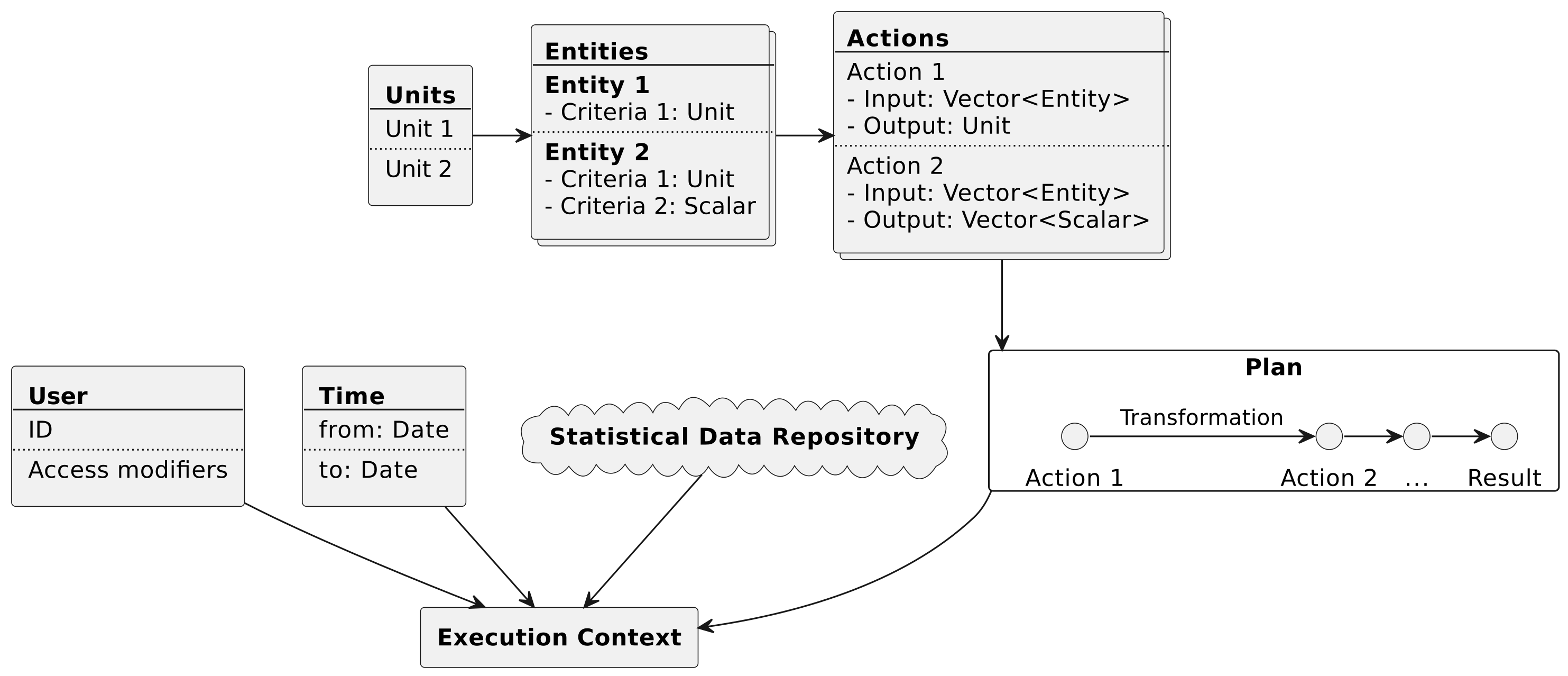Finding a conceptual approach to developing an architecture of general-purpose services for economic researches
DOI:
https://doi.org/10.15587/2706-5448.2023.283983Keywords:
service-oriented architecture, statistical functions, processing information, statistical and economic informationAbstract
The object of research is the architecture of general-purpose services for economic researches. The excessive popularity of service-oriented architecture implementations has led to consideration of the application of this approach in the production of organizations engaged in processing statistical and economic information for analytical research. This is due to the possibility of reusing services, each of which is designed to perform specific statistical functions, and the availability of design solutions for compiling these functions into a program for implementing a statistical task solution, using orchestration as a basis for dynamic service calls.
The paper proposes an approach to the development of external statistical services as a set of software products for solving analytical tasks by groups of independent researchers. Since such researchers do not have sufficient financial support, the use of external statistical services will allow them to conduct an in-depth analysis of their research results. The proposed approach assumes that such a service should have its typical data storage structure with fixed types and attributes, to which the researcher imports their own data, selects a calculation execution scheme, initializes their execution, and receives results. Taking into account this storage scheme, the authors have identified the main groups of metadata necessary to describe the implementation of the statistical process. A statistical business process typically consists of a set of procedures that implement certain statistical operations and data transformations, and the provided set of metadata allows for the realization of the process goal and activity.
Issues that require further in-depth research for the practical implementation of the proposed idea have been identified. The use of service-oriented architecture for building statistical processes allows for standardizing the approach by unifying the functions of individual services. The availability of possibilities for practical implementation of software products in a service-oriented architecture using a cloud environment in modern IT industry serves as a guide for further research direction.
References
- Modernization of official statistics. UNECE. Available at: https://unece.org/statistics/modernization-official-statistics Last accessed: 30.03.2023
- ESS Vision 2020 Shared Services. European Commission. Collaboration in Research and Methodology for Official Statistics. Available at: https://ec.europa.eu/eurostat/cros/content/ess-vision-2020-shared-services_en Last accessed: 30.03.2023
- Lumpova, T. I., Ostapchuk, O. E. (2016). Vykorystannia statystychnoi posluhy dlia perekhodu do servis-oriientovanoi arkhitektury statystychnoho vyrobnytstva. Statystyka Ukrainy, 2, 6–13.
- Pakari, S., Kheirkhah, E., Jalali, M. (2014). Web Service Discovery Methods and Techniques: A Review. International Journal of Computer Science, Engineering and Information Technology, 4 (1), 1–14. doi: https://doi.org/10.5121/ijcseit.2014.4101
- Torma, S., Villstedt, J., Lehtinen, V., Oliver, I., Luukkala, V. (2008). Semantic web services – a survey. Helsinki University of Technology. Available at: https://www.semanticscholar.org/paper/SEMANTIC-WEB-SERVICES-%E2%80%94-A-SURVEY-Villstedt-Oliver/b10040ffe9b7e8a2d9b82ee473248935c00ec9ac
- Sycara, K., Paolucci, M., Ankolekar, A., Srinivasan, N. (2003). Automated discovery, interaction and composition of Semantic Web services. Journal of Web Semantics, 1 (1), 27–46. doi: https://doi.org/10.1016/j.websem.2003.07.002
- Sperley, E. (1999). The Enterprise Data Warehouse, Volume I: Planning, Building and Implementation: 1 (Hewlett-Packard Professional Books). Prentice Hall, 368.
- Herasymenko, S. S., Holovach, A. S., Yerina, A. M. et al.; Herasymenko, S. S. (Ed.) (2000). Statystyka. Kyiv: KNEU, 467.
- Petrenko, A., Bulakh, B. (2018). Intelligent Service Discovery and Orchestration. 2018 IEEE First International Conference on System Analysis & Intelligent Computing (SAIC). Kyiv, 1–5. doi: https://doi.org/10.1109/saic.2018.8516723
- Guidelines for the Modeling of Statistical Data and Metadata (1995). United Nations Statistical Commission and Economic Commission for Europe. Methodological Material. Geneva, 31. Available at: https://unece.org/DAM/stats/publications/metadatamodeling.pdf Last accessed: 29.03.2023

Downloads
Published
How to Cite
Issue
Section
License
Copyright (c) 2023 Tetyana Lumpova, Ihor Kasianchuk

This work is licensed under a Creative Commons Attribution 4.0 International License.
The consolidation and conditions for the transfer of copyright (identification of authorship) is carried out in the License Agreement. In particular, the authors reserve the right to the authorship of their manuscript and transfer the first publication of this work to the journal under the terms of the Creative Commons CC BY license. At the same time, they have the right to conclude on their own additional agreements concerning the non-exclusive distribution of the work in the form in which it was published by this journal, but provided that the link to the first publication of the article in this journal is preserved.







